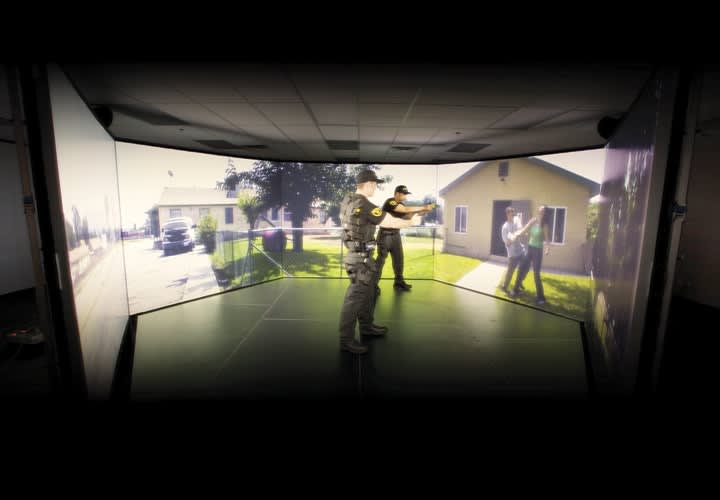Branching is a key component of judgment training systems. The scenario progresses in different ways depending on the officer's actions. It's taken for granted at many agencies that such systems will recognize their actions. But not everyone has access to these training tools.
"Prior to this system, we used live actors for 'use-of-force scenarios,'" says Therrien. "If weapons were utilized, there was no immediate response unless Simunitions were used, which can be a costly venture. The Milo judgment system from IES allows for high repetition at minimal cost (after initial investment), and also allows for the use of CS and TASERs with immediate response." In fact, multiple officers with up to five weapons at a time can participate in one use-of-force scenario.
For additional realism, IES' Milo Range Pro with Microsoft Kinect can detect and respond to actions such as baton swings, punches and kicks, customized poses and gestures, tactical movement and positions, and verbal commands. It can be added to any Milo Range Pro or Advanced system with Milo range 4 software.
Meggitt's BlueFire weapons are an example of how wireless technology can improve use-of-force training. Unlike the old tethered systems, these weapons feel real. If the officer doesn't load the pistol properly, the system won't recognize the gun as firing at the screen when the trigger is depressed. The instructor can also create a simulated jam in the weapon, forcing the officer to follow all steps to clear the jam before re-engaging the threat. Meggitt's lasers will even recognize if the officer's line of fire comes in contact with his "on-screen partner" in the scenario, creating a friendly fire situation.
After the officer has gone through a scenario on a judgment system, the analytics produced provide a clear guide for more specific instruction to correct problems. Both the officer and instructor can see a colored marker designating the actual shot placement on screen along with different colors marking the point of aim and how much the muzzle moved in between.












